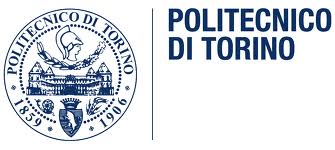Cofin 2002
- Details
- Last Updated on Thursday, 12 February 2015 18:27
JETS FROM YOUNG STARS: NUMERICAL AND LABORATORY SIMULATIONS OF IPERSONIC JETS
NUMERICAL SIMULATIONS OF RADIATIVE JETS AND COMPARISON WITH OBSERVATIONS. High resolution observations in the optical (from the Hubble Space Telescope, HST) and infrared bands show that dynamical processes, involving matter outflows, can determine both morphology and energetic and radiative properties of the collimated supersonic jets lacated in star forming regions (Herbig-Haro jets). Moreover, the study of the physical properties of jets can yield information and constraints on the on the central source and on the structure of the surrounding accretion disk (task of the Osservatorio UdR) that, typically, are not directly observable. In particular, recent HST observations (Firenze UdR) have investigated the velocity structure and shock wave morphology of some stellar jets in great detail and in regions very close to the jet origin. This observations allow to obtain twodimensional maps of the velocity, ionization fraction and flux density behaviors. In collaboration with researchers of the UdR of the Osservatori of Torino and Firenze, one plans to study by numerical means the behavior of an ipersonic jet, with different values of pressure density and velocity with respect to the ambient, for reproducing the observed physical parameters in the regions close to the jet origin. To accomplish this goal, an extension of the hydrocode to include radiative losses, both atomic and molecular, is needed. It will be possible to pursue in the study about the radiative jet stability as well analysing, in particular, the entrainment effects on the material surrounding the jets, that can be revealed from maser emission observations (Cagliari UdR). In fact, studies in the radio band of the maser emission from regions around jets yield highly detailed gas velocity maps. On the other hand, stellar jets are known to interact with the ambient entraining it via two main mechanisms: prompt and steady state entrainment. The former preocess is typical of the working surfaces present on the jet heads, while the latter one follows by shear-layer (or Kelvin-Helmholtz) instabilities and involves the lateral surface of jets. The study of the temporal evolution of a perturbed radiative jet will thus enlight the dynamical aspects of the matter entrainment and will be related with observational data.
COMPARED STUDY OF IPERSONIC JETS. The study of astrophysical jets offers the possibility and the motivations for investigating the dynamical behavior of fluids under physical conditions that are not met in the usual environments but present many points in common with aerospace engineering. In fact, many physical phenomena typical of astrophysical jets, such as Kelvin-Helmholtz instabilities, the shock wave generation and the turbulence development are of interest in problems connected to reentry vehicles as well. The shock wave formation is, in this scheme, particularly relevant with respect to both the morphological and energy balance of the jet, since these shock waves are place of the flow energy dissipation and can yield mixing processes of the jet-ambient medium, of matter entrainment and turbulence development. Until nowadays, the study of ipersonic jets is lacking, nationwide and internationally, a comparison between jet numerical simulation results and data taken from experiments carried out in physical conditions that approach those of astrophysical Herbig-Haro jets. Experimantal simulations of jets in conditions that intend to mimic the astrophysical ones are discussed in the recent literature (Mizuta, Yamada, Takabe 2002, Raga et al. 2001, Lebedev et al. 2002), but their structure only partially repruduce the characteristics of ipersonic and highly collimated jets observed in star formation regions. In the laboratory experiment that is being carried out at the Politecnico di Milano one plans to reach Mach numbers 10-20 at the jets origin, thus comparable to those estimated for stellar jets, with Reynolds numbers high enough to allow the eventual development of turbulent motions. From these experiments one expects to follow the spatial evolution of turbulent jets on scale lengths of the order of 100 times the initial typical scale (typically the diameter of the nozzle at the inlet). The key aspects that this kind of investigation can clarify are: i) whether and how these jets diverge and which way interact with the ambient medium (flow entrainment), ii) which are the turbulent structure characteristics starting with the large scale ones, of the oerder of the jet transverse size, down to those on smaller scale that can be possibly observed. Both these aspects are of great interest for understanding the phenomenology of stellar jets. Moreover one may ask whether and in which region of the parameter space the numerical simulations, that are characterized by Reynolds numbers of the order, or slightly exceeding, hundred, may reproduce the main features of the laboratory jets (Re=3000-20000), and the astrophysical ones that have exceedingly high values of Reynolds numbers. For this reason the applicants will continue studying the physics of astrophysical jets by numerical means and compare the results both with astrophysical observations and with data on laboratory jets.



